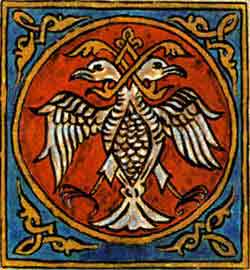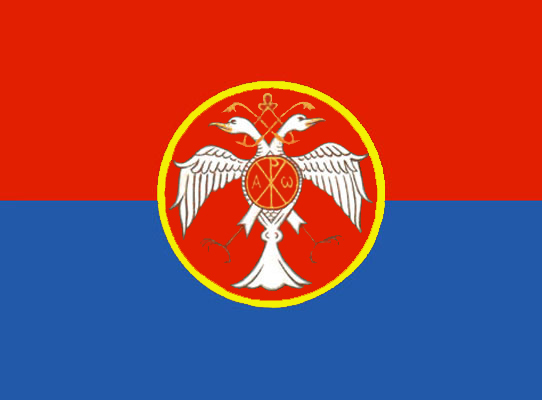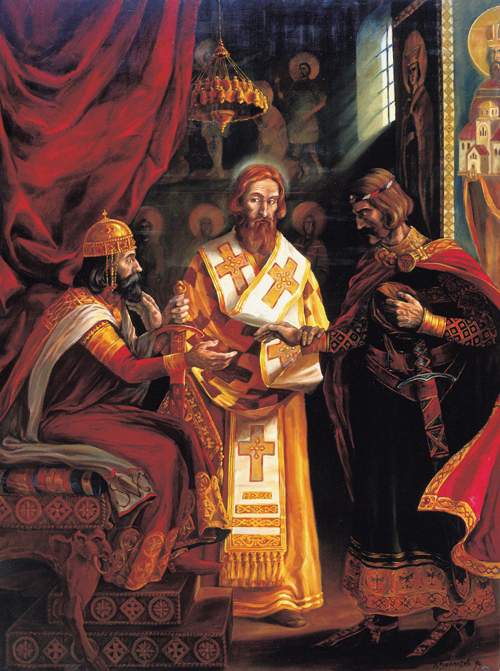

 |
 |
Serbs belong to the Southslavonic group of Indo-European peoples. As their tradition, culture, language, beliefs, and customs show, the ethnogenesis of Serbs goes far back into the past. Serbian ancestors, Protoslavs and Old Serbs, were described in the 5th century BC by Herodotus, under the names of Neuri and Budini, living north of the Danube in the region between Dniepar and north-eastern Carpathian Mountains.
The first mention of the name "Serbs" appears in the 1st century BC (69- 75), in the Historia naturalis by Plinius Caecilius Secundus, who states that Serbs (Serbi) live on the coast of the Black Sea. In the 2nd century, Claudius Ptolomaius writes in his Geographica that Serbs (Serboi, Sirboi - Serboi, Sirboi) live behind the Caucasus, near the hinterland of the Black Sea. The first mention of the Serbian name on their present ethnical location appears in 822, in the work of Frank chronicler Einhardt (Annales regni Francorum). He confirms that Serbs are very numerous in Dalmatia.

Serbian medieval flag
During the great migrations in Europe (5th to 6th century), Serbian ancestors arrive to the Balkan Peninsula from several directions and settle in the wide area between four seas (Black, Adriatic, Aegean, and Ionian). It is on this location that the eldest Serbian feudal states Raska (later Serbia) and Duklja (later Zeta or Montenegro) were formed. From the second half of the 12th century Raska expanded by taking over the Byzantine territory. The medieval Serbian state reached the height of power under the rule of Nemanjic dynasty (1166-1371). From 1217 Serbia was a kingdom, and from 1346 an empire. The Serbian Orthodox Church acquired independence in 1219, thanks to its first Archbishop St. Sava Nemanjic (1175-1235), a man of wide education, who inspired the revival of Serbian literature, education, law and medicine. The medieval Serbian state was most powerful during the reign of Emperor Dusan Nemanjic, who consolidated the legal system of the empire by his Law issued in 1349 (with additions of 1354). Medieval Serbian art, architecture, and fresco painting have been included into the World Cultural Heritage, sponsored by UNESCO (monasteries Sopocani, Mileseva, Studenica).

Saint Sava and his brothers
An invasion by the Turks at the end of the 14th century cut short the development of Serbian countries, and they fell under Turkish occupation after the battles of Marica (1371) and Kosovo (1389). The occupation was completed by the end of the 15th century and it lasted for several centuries. The Turkish occupation was one of the most tragic periods in the Serbian history. Serbian population was heavily taxed (harach) to support the Turkish imperial machinery. But even more tragic was the blood tax (danak u krvi) when pre teenage boys were separated by force from their parents to be raised as Turkish soldiers (janicari), and pretty young Serbian girls were taken to harems.
Serbian Orthodox churches and frescoes were destroyed and mutilated. Rebellions were harshly punished - men were buried alive or impaled on posts. Near the town of Nis, stands today a tragic reminder of the brutality - skulls of Serbian people built into a tower (Cele Kula). Earthly remains of St.Sava, the most worshipped Serbian Saint, were publicly burned by the Turkish soldiers on the hill of Vracar in Belgrade.
 |
 |
 |
 |
 |
 |